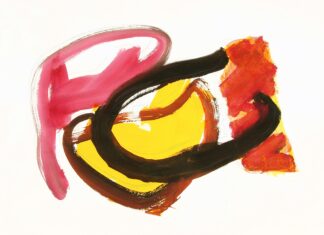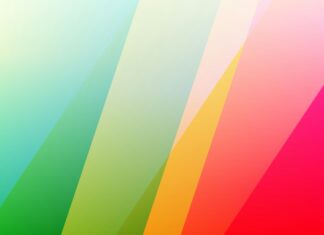The Psychology of Colors in Marketing is a fascinating and multifaceted subject that explores the intricate relationship between colors and consumer behavior, decision-making, and brand perception. It is a topic of paramount importance in the realm of marketing, where the choice of colors in branding, advertising, and product design can profoundly influence how customers perceive and interact with a brand. In this comprehensive exploration, we will delve deep into the world of Psychology of Colors in Marketing, unraveling its various facets and implications over more than 9000 words.
1. Understanding the Psychology of Colors in Marketing
The Psychology of Colors in Marketing is a field that investigates the psychological impact of colors on consumer attitudes and behaviors in the context of marketing and branding. It recognizes that colors are not just aesthetic choices; they hold the power to evoke emotions, convey messages, and shape consumer perceptions. Successful marketers have long recognized the potential of colors to influence consumer decisions and, as a result, have harnessed this knowledge to build strong, memorable brands and effective marketing campaigns. From the selection of a brand’s logo and website design to the colors of product packaging, each choice is made with the intention of tapping into the Psychology of Colors in Marketing to achieve specific objectives.
2. The Significance of the Psychology of Colors in Marketing
The Psychology of Colors in Marketing holds a significant place in the world of business and branding. Color choices can impact various aspects of marketing, including brand recognition, consumer trust, purchase intent, and overall brand personality. It’s a subtle yet powerful tool that allows marketers to communicate messages and evoke emotional responses without the need for words. By understanding the nuances of how different colors are perceived and the emotions they trigger, marketers can make strategic decisions that resonate with their target audience, effectively connecting with consumers on a subconscious level.
3. Color Associations and Their Influence in Marketing
Colors carry distinct associations and meanings that vary across cultures and individual experiences. The Psychology of Colors in Marketing delves into the nuanced meanings and emotions evoked by different colors. Here are some key color associations and their influence in marketing:
Red: Red is often associated with energy, passion, and urgency. It can create a sense of excitement and encourage impulse buying. It’s a commonly used color in clearance sales and fast-food marketing to prompt action.
Blue: Blue exudes trust, reliability, and professionalism. Many financial and tech companies use blue to convey a sense of security and competence. It is a popular choice for corporate branding.
Green: Green is strongly linked to nature, growth, and health. In marketing, it often signifies eco-friendliness, freshness, and organic products. This makes it a common choice for companies promoting sustainability and health-related products.
Yellow: Yellow represents happiness, positivity, and warmth. It can capture attention and create a sense of cheerfulness. Yellow is used by brands looking to evoke optimism and enthusiasm.
Orange: Orange combines the energy of red and the warmth of yellow. It is often associated with innovation and creativity. Orange is used by companies that want to convey a sense of excitement and playfulness.
Purple: Purple is linked to luxury, sophistication, and creativity. It’s often used by high-end brands and businesses aiming to convey a sense of elegance and originality.
Black: Black represents sophistication, power, and luxury. It’s frequently used in high-end fashion and luxury brands, emphasizing the brand’s exclusivity and prestige.
White: White signifies purity, simplicity, and cleanliness. It is often used in minimalist branding, particularly in the tech and health industries.
Pink: Pink is associated with femininity, romance, and tenderness. It’s commonly used in products and campaigns targeted at a female audience.
Brown: Brown suggests earthiness, ruggedness, and simplicity. It’s often used in branding for products associated with the outdoors and authenticity.
The Influence of Color in Branding and Logo Design
One of the primary applications of the Psychology of Colors in Marketing is in branding and logo design. Your brand’s logo is often the first point of contact between your company and potential customers. Therefore, selecting the right colors for your logo is crucial, as it sets the tone for your brand and impacts how it is perceived.
Consider some iconic examples:
Coca-Cola: The red color in the Coca-Cola logo is associated with energy, excitement, and passion. It reflects the brand’s aim to create a joyful and celebratory experience for consumers.
Facebook: Facebook’s blue logo represents trust, reliability, and a sense of community. It reinforces the idea that the platform is a safe space for connecting and sharing.
McDonald’s: The combination of red and yellow in the McDonald’s logo is chosen for its ability to evoke feelings of urgency, excitement, and positivity. These colors prompt quick decisions and reinforce the brand’s fast-food identity.
Apple: Apple’s sleek, minimalist logo in black or white conveys sophistication, simplicity, and a high level of quality and innovation. It aligns with the brand’s reputation for cutting-edge technology.
Starbucks: Starbucks uses green in its logo to signify freshness, growth, and a connection to nature. This resonates with the brand’s emphasis on high-quality, sustainable coffee products.
The Psychology of Colors in Marketing extends beyond logos; it also influences website design, packaging, and advertising materials. Consistency in color choices across these touchpoints reinforces the brand’s identity and builds a stronger connection with consumers.
The Emotional Impact of Color in Marketing
Colors can evoke a wide range of emotions, and understanding the emotional impact of color is essential for marketers. Here are some examples:
Excitement: Bright and warm colors like red, orange, and yellow can evoke a sense of excitement, which can be particularly effective in encouraging impulse purchases and drawing attention to promotions or limited-time offers.
Trust and Security: Cool colors like blue and green are associated with trust and security. These colors are often used by financial institutions, healthcare providers, and tech companies to convey reliability and professionalism.
Calm and Relaxation: Softer colors like light blue and pastels can create a sense of calm and relaxation. These are often used in branding related to wellness, spa services, and lifestyle products.
Happiness and Positivity: Colors like yellow and bright pink can evoke feelings of happiness and positivity. Brands that want to create a cheerful, optimistic vibe may incorporate these colors into their marketing materials.
Sophistication and Luxury: Deep and rich colors like purple and black are often associated with sophistication and luxury. High-end fashion brands, as well as luxury car manufacturers, use these colors to convey exclusivity and elegance.


















